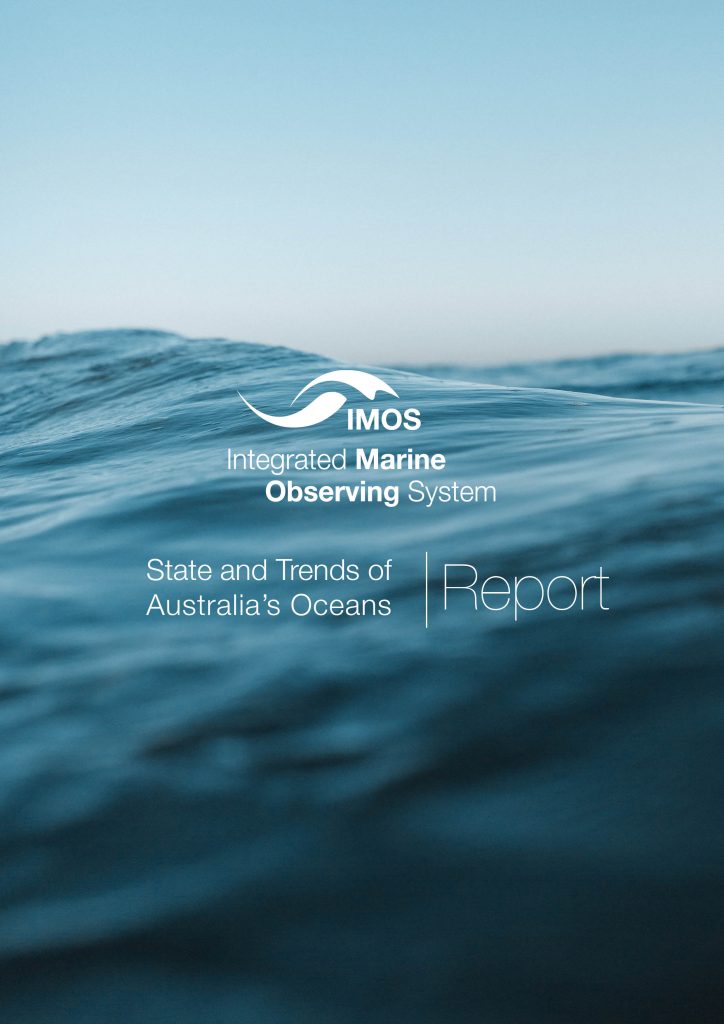Summary
Trichodesmium is an important nitrogen fixer especially in oligotrophic areas of the oceans and a major component of primary production. Monitoring the changes in abundances and seasonal variations in Trichodesmium around Australia help us to understand which environmental variables are driving abundance and distribution. It appears that sea surface temperature and phosphate availability are the major drivers for increased abundances in the GBR. The increased abundances we are seeing over time at the Yongala National Reference Station may be a response to climate change and will have implications for nutrient cycling in the region.
Key Information
[insert key information from the papers]
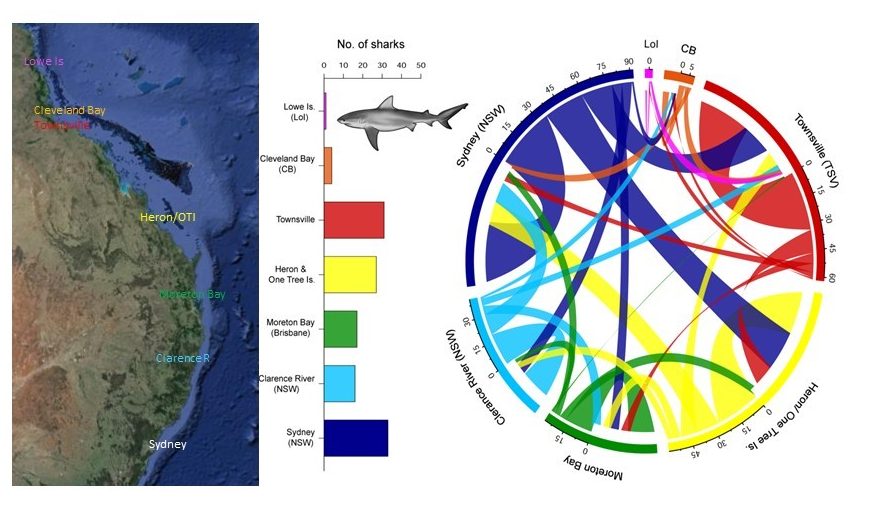
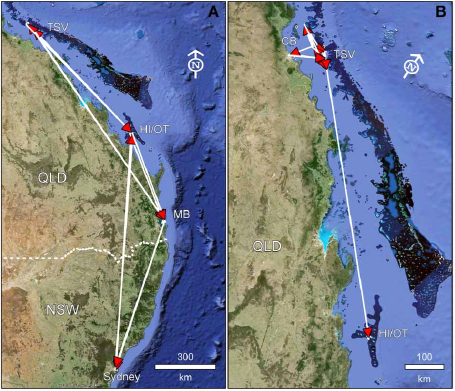
Map indicating the location of acoustic receiver arrays along the east coast of Australia and associated connectivity plot (chord diagram), indicating movement of individuals between receiver arrays.
Straight line movements of an individual released in (A) NSW and (B) QLD based on detections on acoustic arrays beyond their capture location.
Download this Time Series Report

Citing this report:
Heupel M, Peddmors V, Espinoza M, Smoothey A, Simpfendorfer C. 2019. Continental-scale shark migrations. State and Trends of Australia's Oceans Report. Integrated Marine Observing System. DOI: 10.1093/jcbiol/rux091
DOI: 10.1093/jcbiol/rux091
Access the Data
Access the data that contributes to this time-series by clicking the icons below
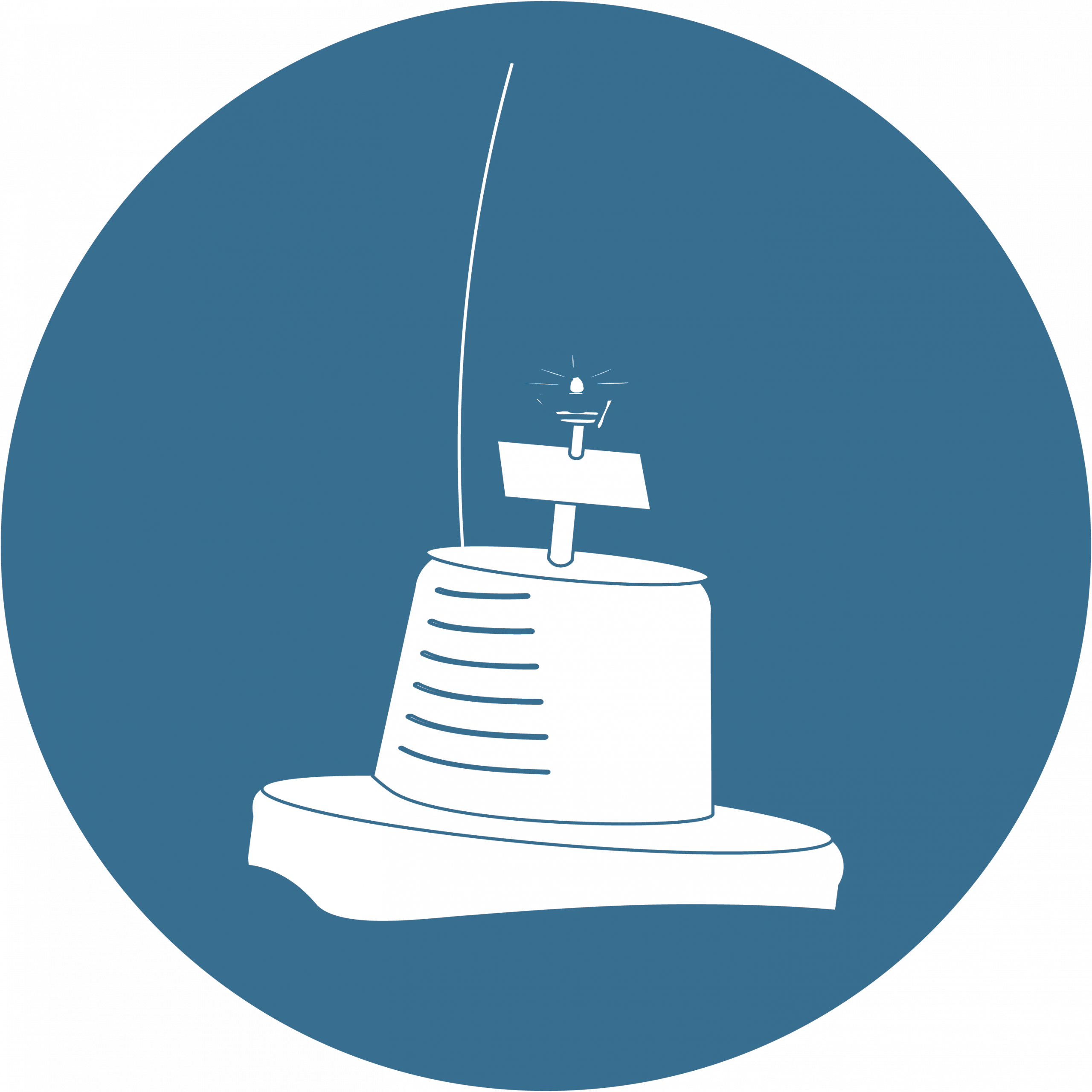
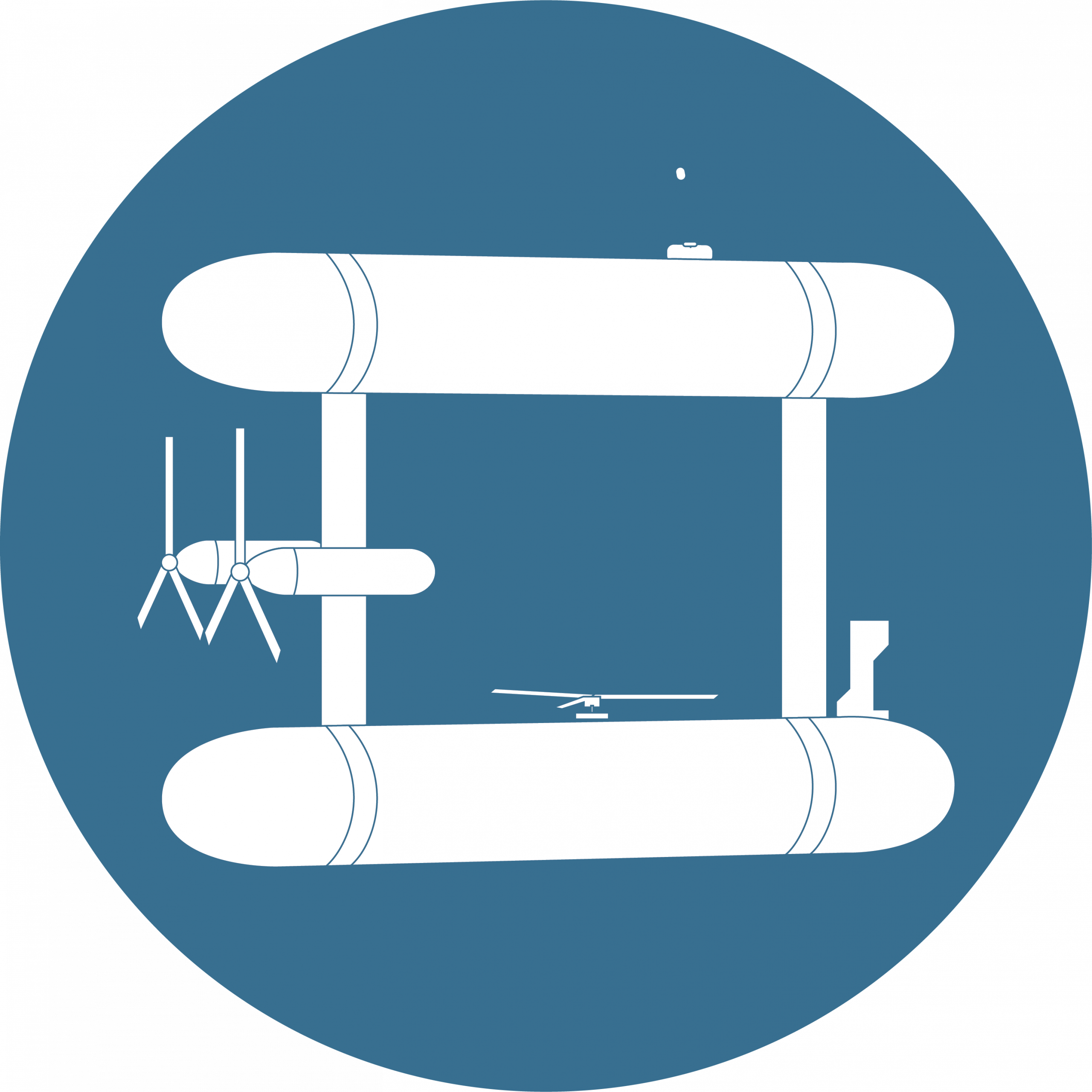
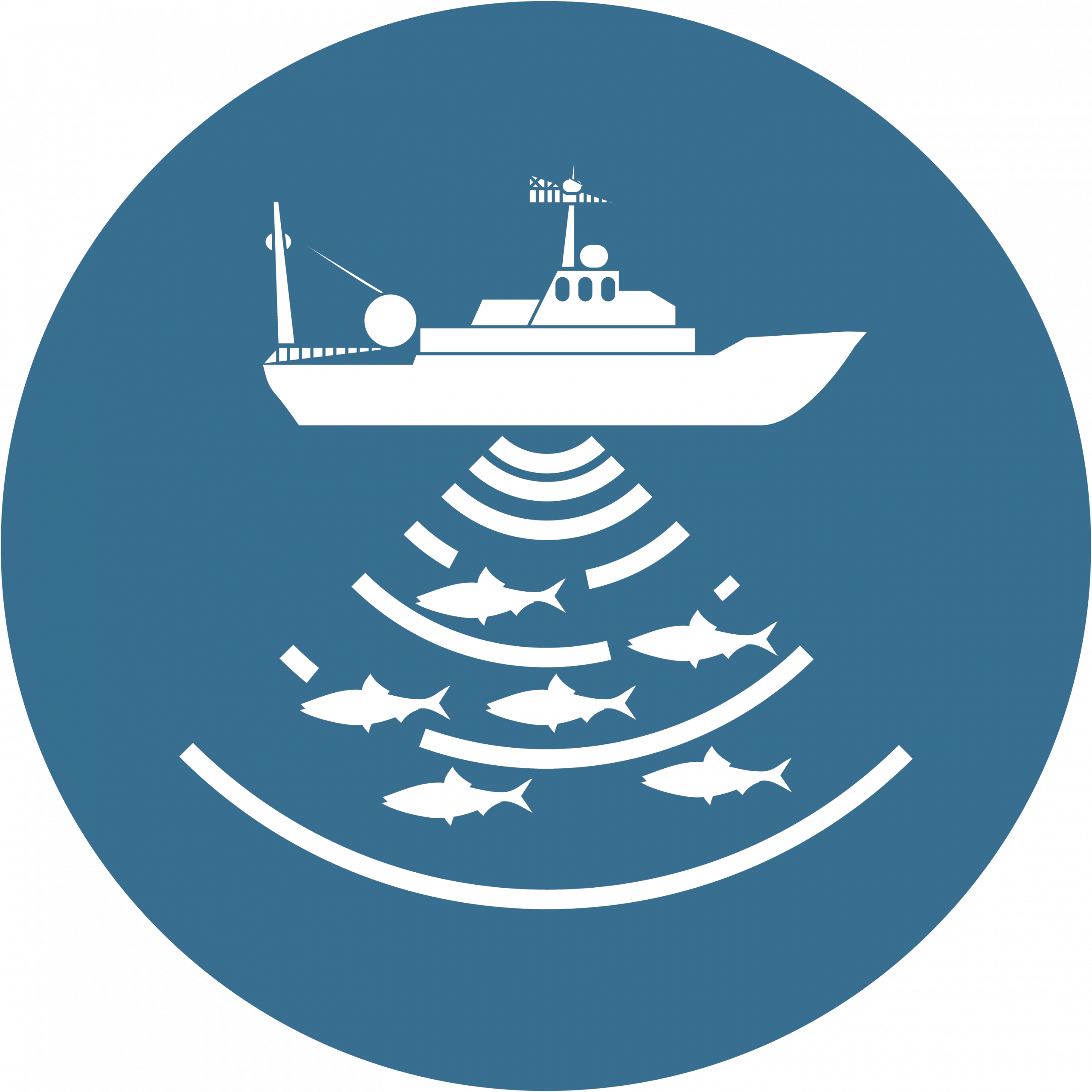
Download the entire State and Trends Report
[Citation information etc]
